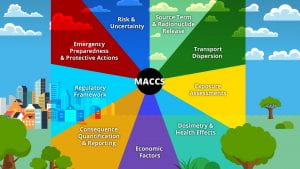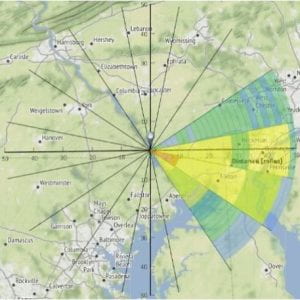Funding: Nuclear Energy University Programs via Texas A&M University (K. Kirkland)
Period of Performance: Oct. 1, 2021-Sept. 30, 2023
The overarching goals of this project are to:
- Enable a more appropriately-sized Physical Protection System (PPS) for advanced reactor designs while maintaining constant or reducing the risk associated with future reactors; and
- Pursue reduced security costs for the life of the reactor to increase the cost-competitiveness of safe and secure nuclear power generation.The proposed project aims to develop a new methodology for designing PPS of microreactors that both reduces the security costs for the life of the reactor and enables a more appropriately-sized PPS. The methodology will be based on a new risk-informed approach in which the realized risk spectrum will be used to inform PPS decision-making as to what constitutes an adequate level of protection relative to a notional acceptable risk. A key technological contributions of this new methodology will be the coupling of consequence modeling with security design in an integrated safety-security framework.
The project tasks will include modeling of a selected non-LWR microreactor design; assessment of microreactor source terms; analysis of associated health consequences and plant behavior in response to adversarial attacks; coupling of the source term analysis with PPS design and PPS design optimization. The success of the methodology will be evaluated by a comparison of the footprint and cost of a PPS designed following the new methodology against the footprint and cost of a PPS designed following the traditional methodology.
Key technological contributions of this new methodology will be the coupling of consequence modeling with security design in an integrated safety-security framework. Simultaneous consideration of core behavior with security-related plant response will enable a cost-optimized design that ensures no additional risk to the public health and safety.
This project will provide the following outcomes and impacts:
- a flexible methodology for PPS design optimization that will reduce upfront and operationalsecurity costs
- potentially, justification for incorporating consequence analysis into physical security regulations
- a means to define the level of risk for microreactors which is based on an integrated analysis of security and safety effects.
Major deliverables will include:
- A new framework for risk informing security-by-design methods
- A new methodology for right-sizing the PPS of a microreactor and design optimization
- An input deck and model of an advanced microreactor for a severe accident code
- Demonstration of the new methodology on a selected non-LWR microreactor design.




